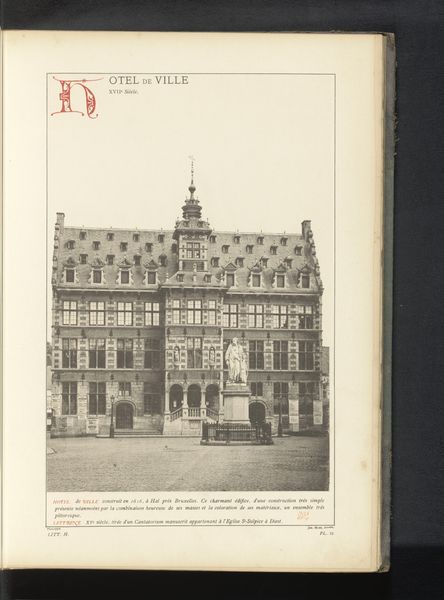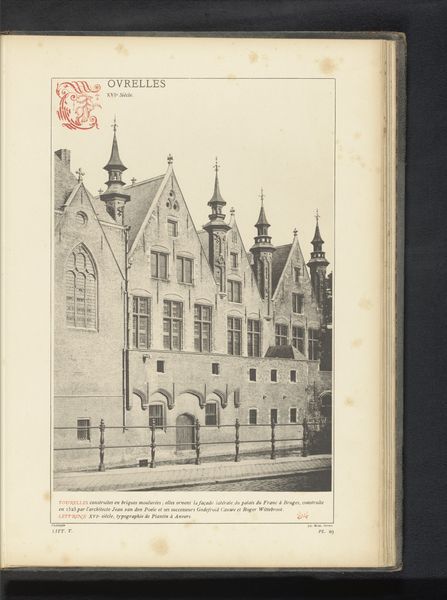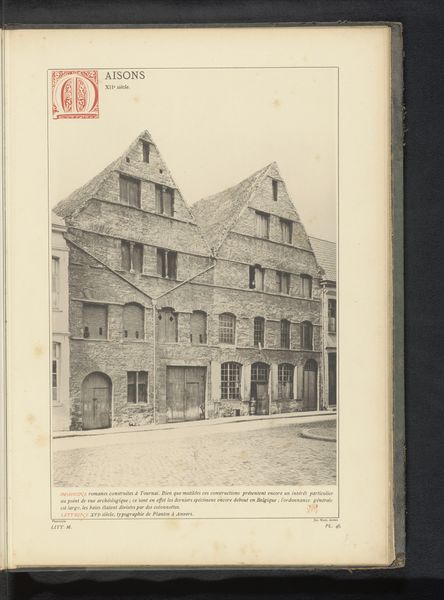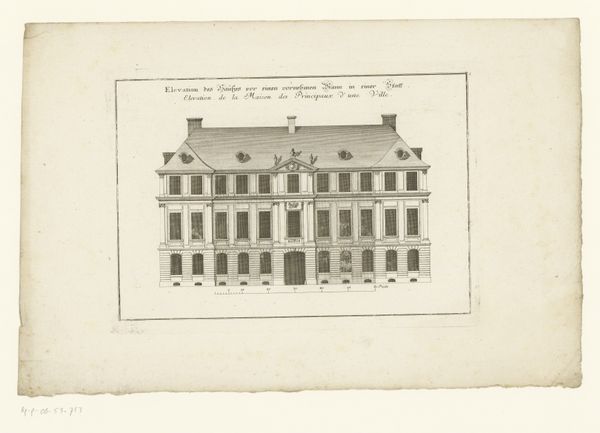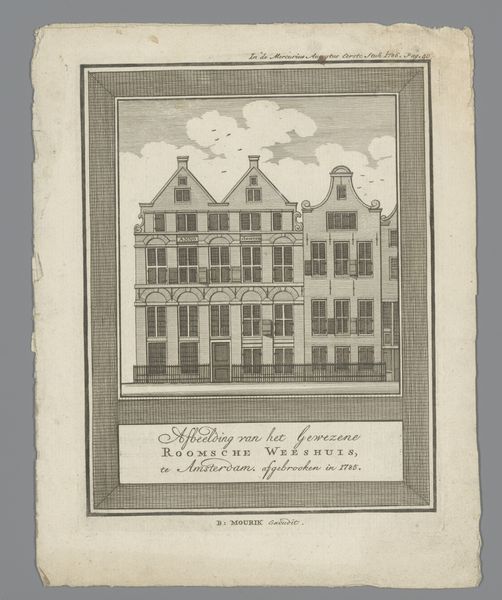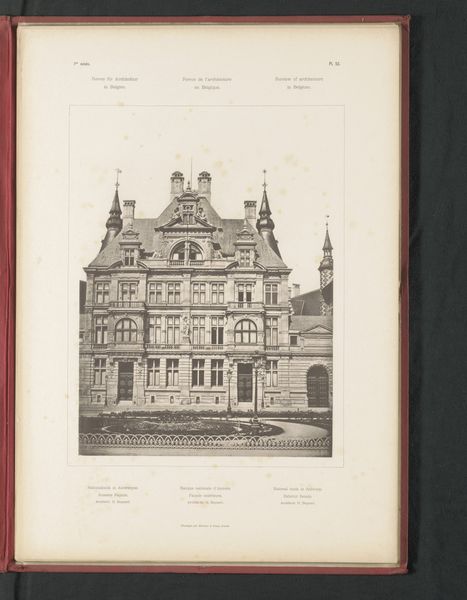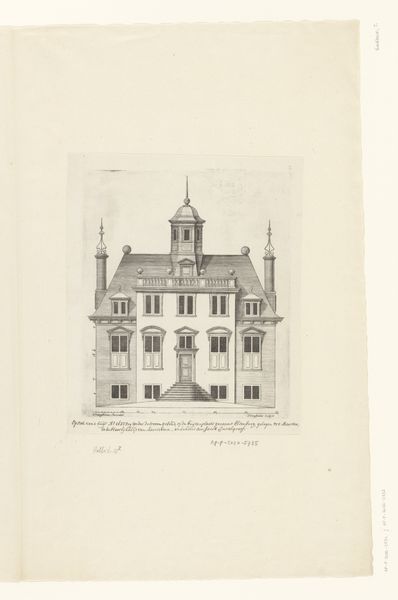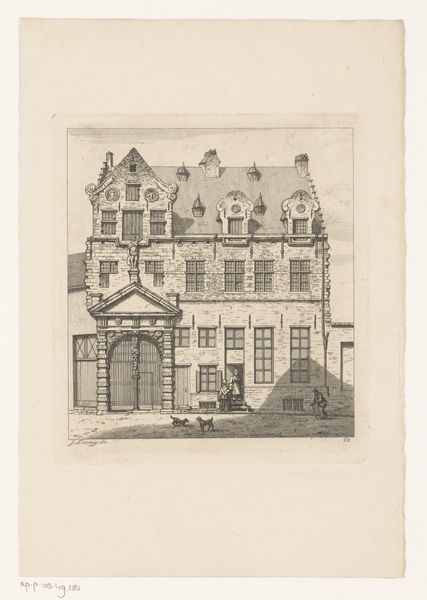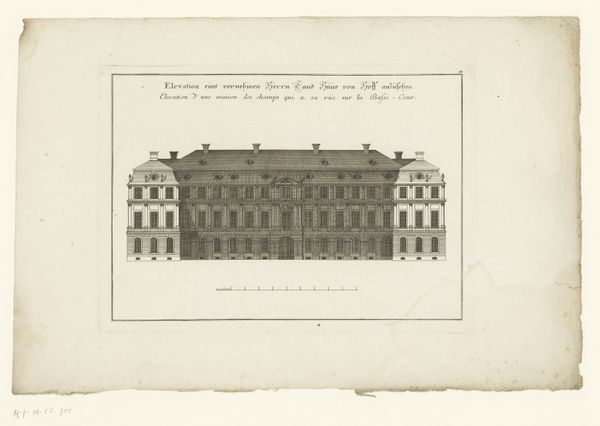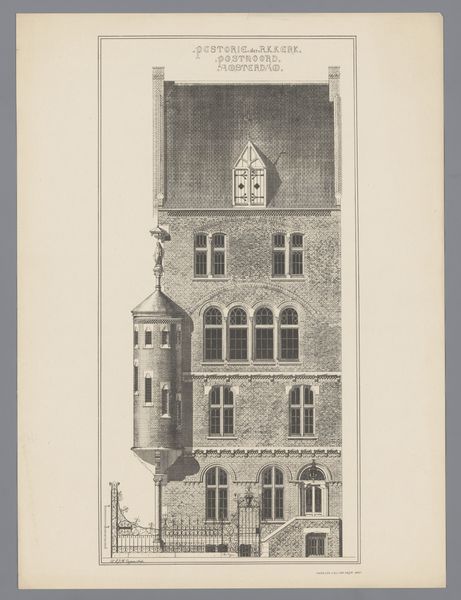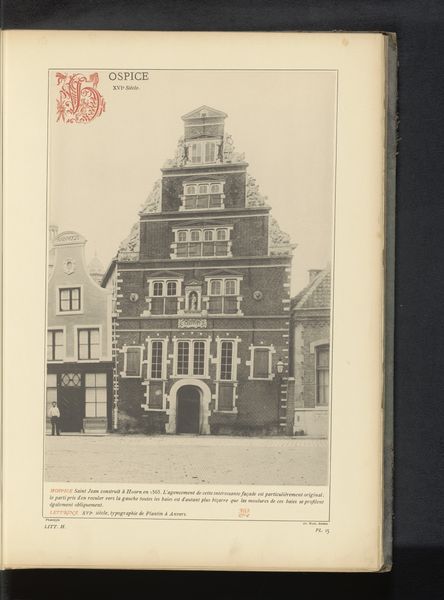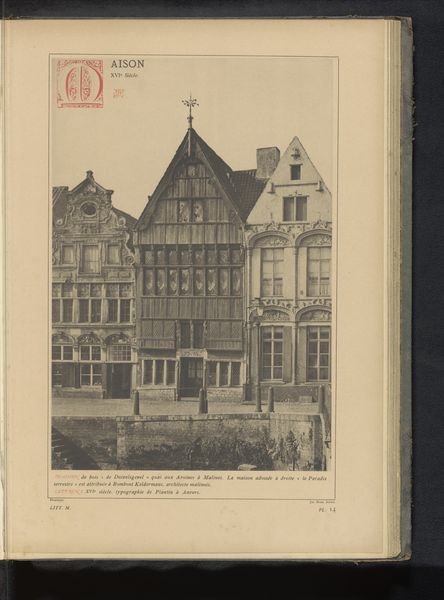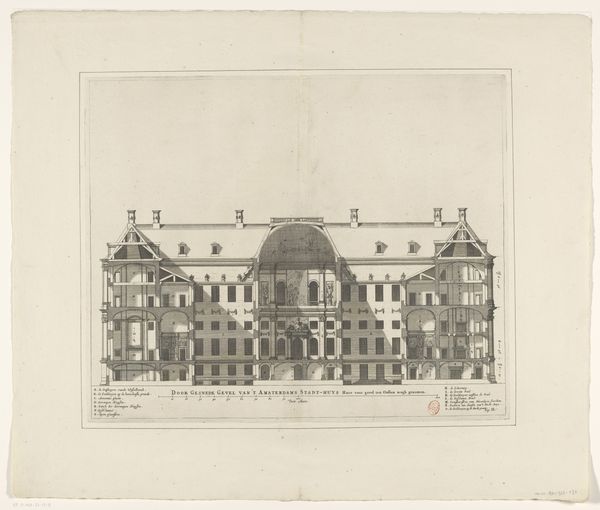
print, photography, architecture
#
dutch-golden-age
# print
#
landscape
#
photography
#
cityscape
#
architecture
#
realism
Dimensions: height 338 mm, width 230 mm
Copyright: Rijks Museum: Open Domain
Editor: Here we have a print entitled "Gezicht op het stadhuis van Hoorn," or "View of the Hoorn Town Hall," made before 1880. The technique seems to be photography. It's striking how this rather ordinary scene, like any Dutch town hall, is transformed into a very formal and stoic image through the high-contrast monochrome and sharp architectural lines. What stands out to you? Curator: What I find most compelling is the material representation of civic power at a specific point in its history. The choice of materials -- brick and stone so precisely cut -- speak to an investment in permanence and stability that the city wanted to project. How do the limitations of photographic technology and printing contribute to this message? Editor: I see what you mean. There's almost a sense of industrial reproduction... making a repeatable statement of solidity. Like, this isn’t just *a* town hall, it’s *the* idea of a town hall, stamped out across multiple prints. What do you mean by limitations in photographic technology contributing? Curator: Well, the high contrast you noted wasn't merely an aesthetic choice. Early photography demanded specific lighting conditions, and the printing process emphasized these contrasts. Think about the labor involved in creating the printing plates, in ensuring this level of clarity, of precision. That labour and standardization became part of that material construction. What kind of audience do you think the makers had in mind? Editor: Perhaps an audience concerned with historical accuracy, like an archive of municipal architecture? This is starting to seem like more than a simple town hall photo. Curator: Precisely! It becomes a material object with a distinct purpose. Thinking about production of architecture through a new technology enables consideration for accessibility and social hierarchy through image production. Editor: This was unexpected! Seeing how much can be uncovered from the material process opens a new point of view about the purpose of historical photography.
Comments
No comments
Be the first to comment and join the conversation on the ultimate creative platform.
